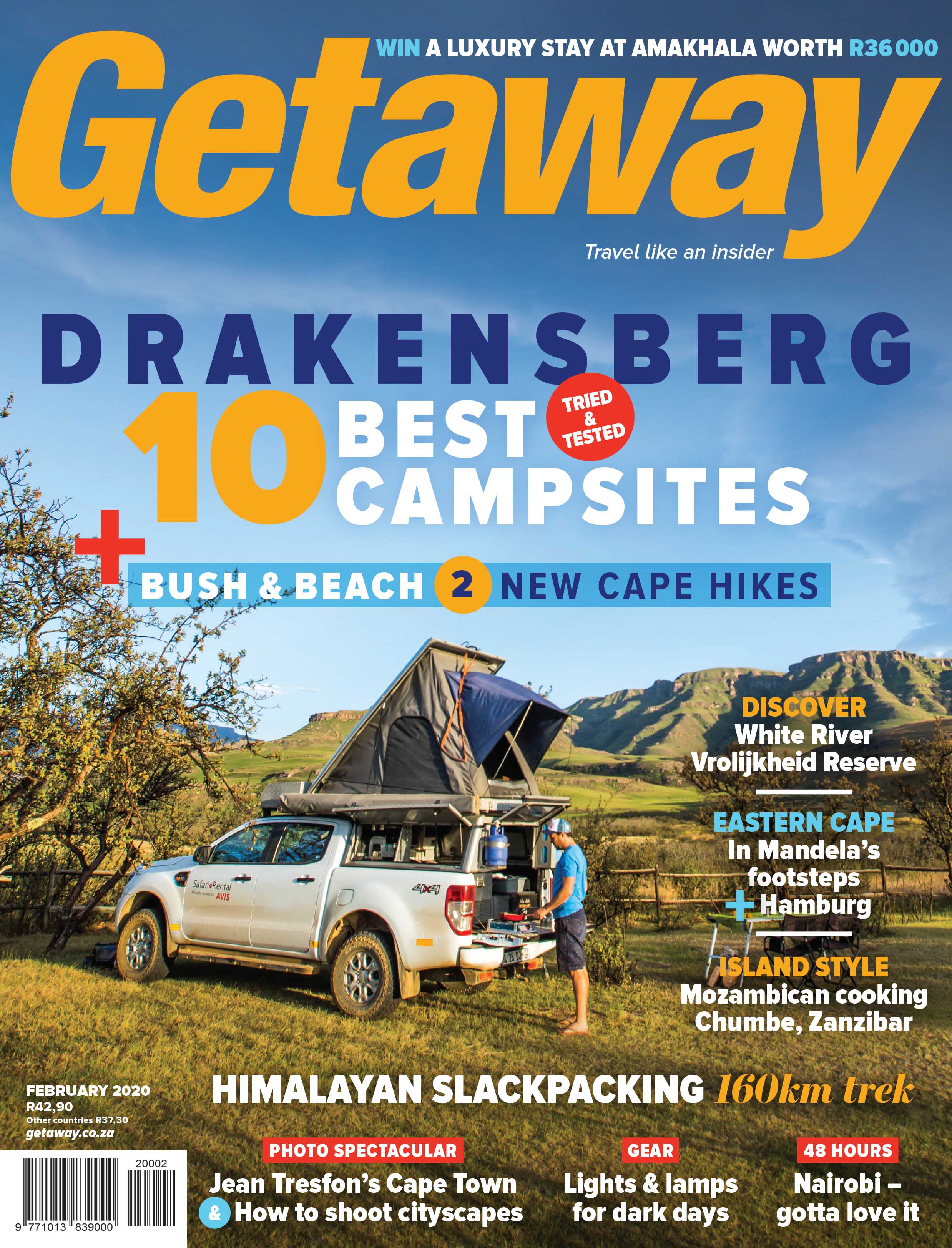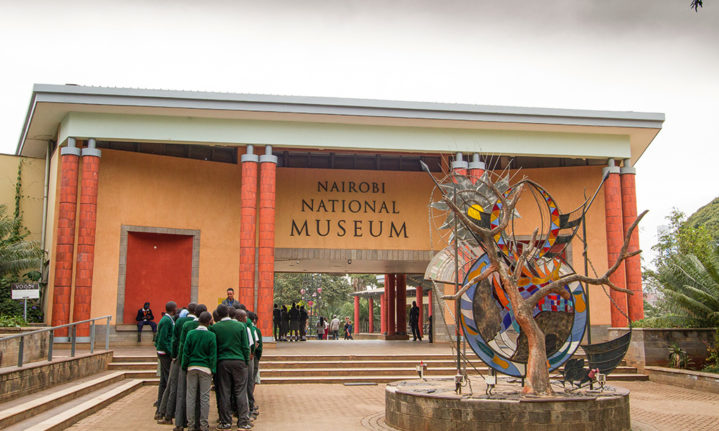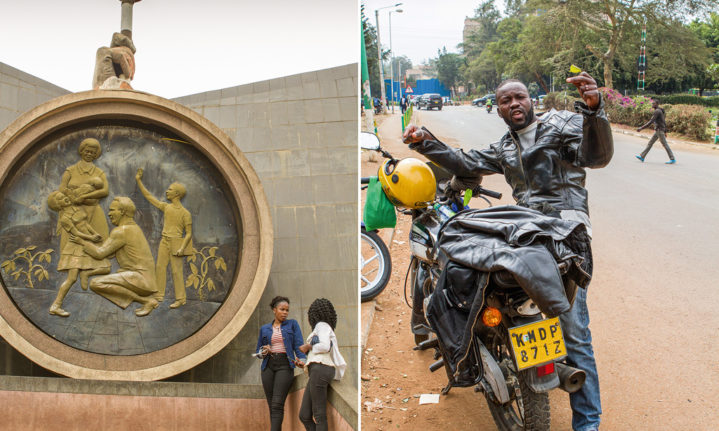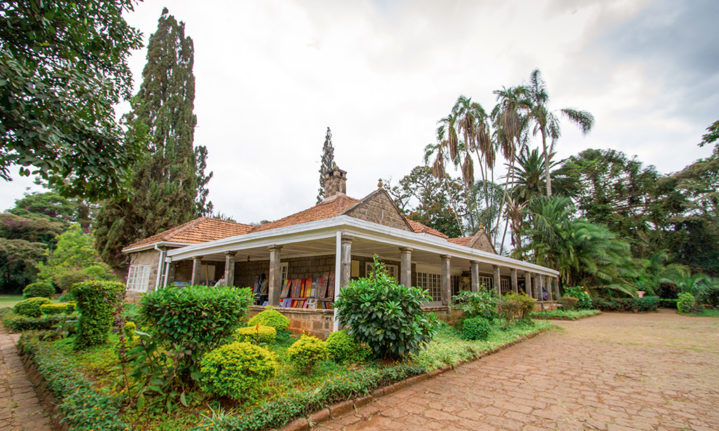Kenya’s capital is not high on anyone’s holiday list. But if you have to fill a day or two before a safari then read this. You might be pleasantly – or even frighteningly – surprised.
Words & photographs Catherine Hofmeyr
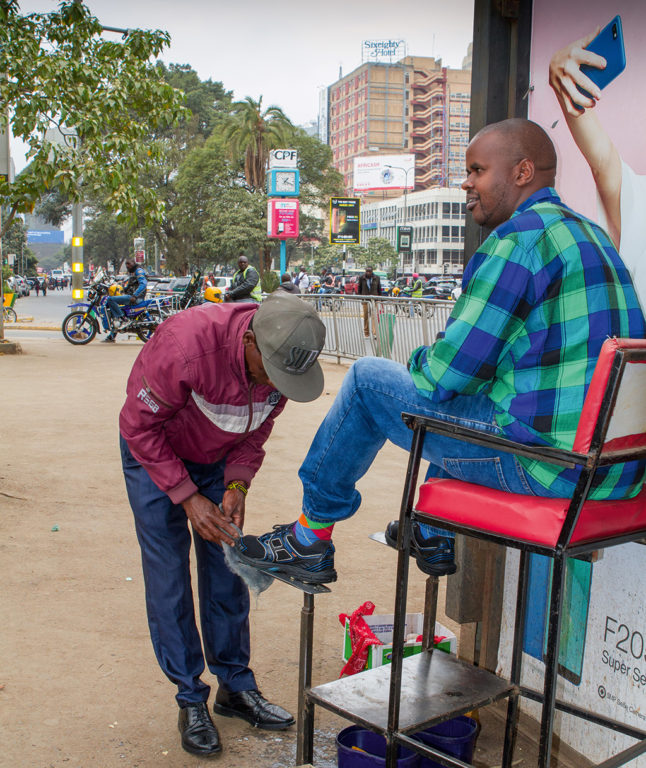
Pick Your Day guide Michael Mwangi gets a dust-off from one of the CBD’s shoe-shine men, while in the background boda-boda drivers wait for customers. Image credit: Catherine Hofmeyr
I had a farm in Africa, at the foot of the Ngong Hills…’ writes Karen Blixen in the opening of Out of Africa. Her farmhouse is still there, but now it’s in Nairobi, at the foot of an electric fence.
But I’m getting ahead of my story. So let’s start when my transport dropped me, still dusty from a leopard sighting in the Masai Mara, at my Airbnb apartment in Westlands, Nairobi. Urban Retro was a chic, self-catering apartment with a security guard and Wi-Fi. I had a phone, 48 hours to kill and not a clue where I was in one of the largest capitals in Africa – a city sometimes called ‘Nairobbery’.
There was an Uber strike. So I walked – to Sarrit Centre for dinner and supplies, mingling and meeting friendly foot commuters en route and feeling unexpectedly safe in the tree-lined suburban streets.
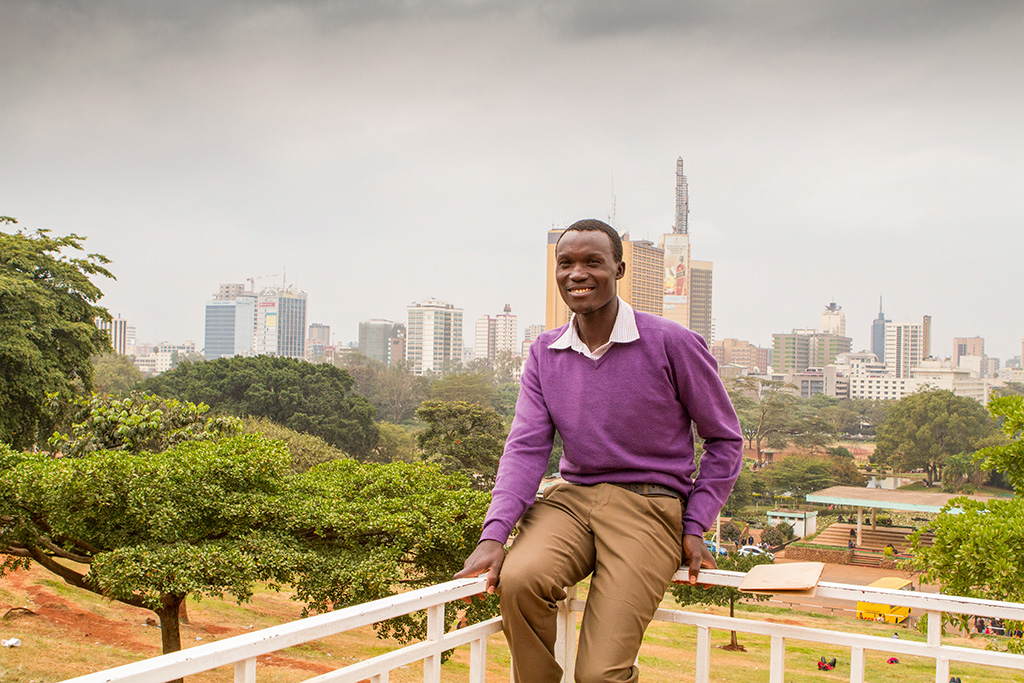
A student contemplates the Nairobi skyline from Uhuru Park. Image credit: Catherine Hofmeyr
The web hooked me up with Pick Your Day tours, a ‘localist’ called Michael Mwangi, and a flexible two-day city itinerary. Sorted. Unlike me, Michael knew where I was and collected me early the next morning for a day out.
The outlying suburbs of Karen and Lengata are Nairobi’s mink and manure belt – think expat smallholdings, the Karen Country Club (once part of the Blixen coffee plantation), baronial houses behind thick hedges and very visible security. It’s also the wildlife sector of the city and home to Nairobi National Park, the only Big Five park in a major city.
Having done the Masai Mara I gave the park a miss, but we popped into the Animal Orphanage where injured or abandoned youngsters are given a second shot at life. It’s the closest I hope I’ll ever get to fully-grown lions but it made me sad to think that Doggy, a wild dog with two legs broken by a buffalo, Talek the leopard and Sarah the lioness, who loves a head scratch from her minders, will never again hunt the plains of the Mara.

Here be hominid skulls, a snake park and botanical garden. Image credit: Catherine Hofmeyr
Next stop was the Giraffe Centre, a conservation success story in bringing back the white-socked Rothschild – a subspecies of the northern giraffe.There were just 120 animals when philanthropist Jock Leslie-Melville started the African Fund for Endangered Wildlife back in 1979. Now there are over 600 of these distinctive-patterned giraffes in Kenya, and I made close acquaintance with Kelly, a particularly robust and well-fed specimen, at the centre.
The suburb of Karen was created when the Blixen’s farm was parcelled up and sold as residential plots. The red-tiled colonial farmhouse where she lived from 1917 to 1931 is now a museum.
With a guide I walked the rooms where Karen paced anxiously awaiting the return of her lover, Denys Finch Hatton, from many a hunt. And in the dining room I perused the menu of Mombasa fish, partridge with peas and macaroni salad prepared for Prince Edward (later the abdicated King Edward VII) when he visited Nairobi in 1928. Some of Karen’s original books and memorabilia are still there, as are props from the 1985 movie Out of Africa. The Oscar-winning film was in fact shot in a nearby house as the cameras were too big to fit through the narrow doors.

Left: The Nyayo Monument in Uhuru Park commemorates Kenyan independence from Britain. Right: Go on, make his day. Hop on a boda boda – it’s the Nairobi thing to do. Image credit: Catherine Hofmeyr
Through the fronds of Karen’s now towering twin palms, I saw a prop plane circling for Wilson Airport. In the city haze it could almost have been a twin-prop biplane, Denys Finch Hatton at the controls. Looking past the electric fences and security boards, I was transported back to 1920; Juba is servings G&Ts on the veranda to Barkly Cole, the coffee bushes are high and all is well with the colony.
Genteel, leafy Karen is not the real Nairobi though. My walking tour of the inner city the next day with Michael promised an edgier experience, including a boda-boda (scooter taxi) ride.
We started at the national museum where I was fascinated by a section of track from the old Uganda Railway. During its construction (completed in 1901), 2 493 Indian labourers died, most of them at the teeth of lions. And, in an extensive exhibition of her life and work, I learnt about the colourful and often controversial character that was Joy Adamson, founder of the Word Wildlife Fund and, for a time, foster mother to Elsa the lioness (documented in her book, Born Free).
From the museum, we parked the car and walked downtown, through the daily bustle of city life, past bus queues, street vendors and shoe-shine men to the inner hub of Nairobi, Uhuru Park. It’s an extensive green area of lawns, trees and an artificial lake, used for occasional political and religious rallies but mostly it’s where people chill and socialise. There were preachers imploring those with little else to do, to take the Lord, and skateboarders practising their moves in what would be the presidential podium during rallies.
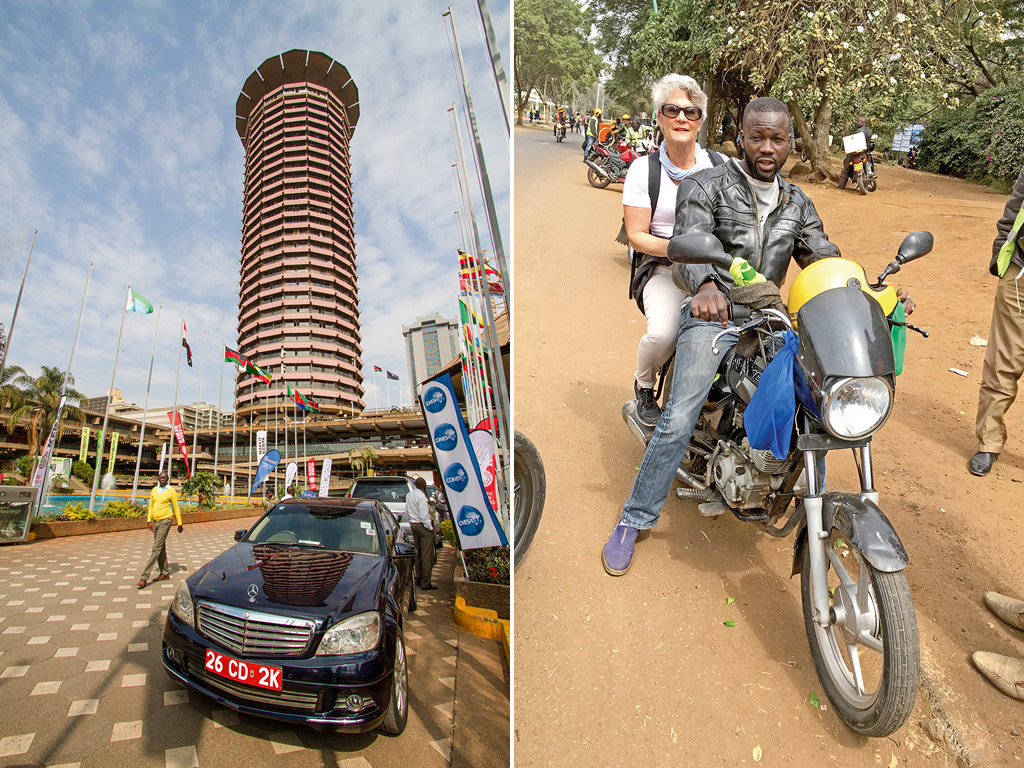
Left: From the viewing deck atop the 28-storey Kenyatta International Convention Centre you get a bird’s eye view of the city. Right: Catherine Hofmeyr on a boda boda ride. Image credit: Catherine Hofmeyr
‘Pick me, pick me,’ pleaded a boda-boda driver from the throng in tell-tale yellow vests outside the park. Michael and I each climbed aboard a bike and off we went, our riders steering over pavements and traffic circles before ducking between the dark-windowed limos of an ambassadorial blue-light cavalcade. My legs were a little shaky when we alighted outside the Kenyatta International Convention Centre (KICC). It’s one of the tallest buildings in the city and from the viewing deck on the roof, Michael pointed out where the Governor of Nairobi lives, where I was staying in Westlands, where Karen Blixen once lived and where over a million Kenyans live in Kibera, the largest slum in Africa.
On our journey back to the car, I wanted to capture the street chaos of a boda boda ride (three-up this time), so camera in hand, I clicked away indiscriminately. And that’s when things went badly pear-shaped.
As the bike pulled to a stop, I got a tap on the shoulder – from a soldier in camouflage with an assault rifle. Taps on shoulders from the military are not a good thing in African cities – particularly when followed by a curt, ‘Come with me.’ We were near the Kenyan Broadcasting Corporation, which is also a military area. Photography was strictly forbidden (there was, in fact, a fairly large sign indicating so but, squeezed between Michael and the driver, I’d missed it). I was in big trouble. Trouble that comes with a Ks50,000 (R7,000) fine, jail-time and very possibly beheading at dawn if the frowns on the faces of the hastily summonsed top brass were an indication. Fortunately, like a lot in Kenya, the debacle was eventually settled to everyone’s satisfaction by an offer of lunch. With me the benefactor, naturally.
‘Released’, Michael and I drove swiftly to Nyama Mama, a trendy bar and restaurant excellent for people watching, where it was also happy hour. And, with the nerve-dulling powers of several cold Tuskers, we reflected on what an exhilarating and very typically Kenyan day I’d been fortunate enough to experience! But, in don’t-try-this-at-home vein, my advice is
leave your camera behind, folks, and rather send a postcard from Nairobi.

Plan your trip
Getting There
Ethiopian Airlines is the most cost-effective option, flying from Cape Town or Joburg via Addis Ababa, from R4,500. ethiopianairlines.com
Need To Know
SA passport holders don’t need a visa for Kenya. Nairobi has had several terrorist attacks and the military is rightly twitchy, so be very careful with photography and always ask permission in official places. At nearly 1,800 metres, Nairobi is much cooler than the coast of Kenya, averaging between 13°C and 27°C year round (winter nights are chilly). Uber is a good way to get around; for short hops downtown, use matatus or boda bodas. I got excellent airport-transfer service from Kenatco, R380 one way, from Westlands (book online). kenatco.co.ke
Stay Here
Urban Retro is a lovely ground-floor apartment with a balcony and Scandinavian design elements in a cul de sac in upmarket Westlands. It’s within walking distance of the Sarrit Centre mall. R961 a night (sleeps two). airbnb.com Airbnb has good stock throughout Nairobi
Try the funky, artistic Big Five, from R442; Jabali Luxury House in the Kilimani area, from R590 (both sleep two), or Open Space Penthouse Vibe Apartment, R605 (sleeps four). airbnb.com
International hotels are well represented but they tend to be extortionate. If you want the full service of a hotel try the Fairview, from R1, 400 pp, B&B. fairviewkenya.com

Meet Kelly at the Giraffe Centre. Image credit: Catherine Hofmeyr
Do This
The city walking tour with Pick Your Day from R450 pp (group of four) is great. Add on a day in Karen and Lengata to see the Animal Orphanage (R300 pp), Giraffe Centre (R210 pp) and the Karen Blixen Museum (R170 pp guided). Day tours from R300 pp. Or tailor your own with a guide. pickyourday.com
Visit the Nairobi National Park (self-drive or take a tour), the world’s only Big-Five wildlife reserve in a major city. Entry is R700 pp. kws.go.ke
Adopt a baby ellie (R750) at the Daphne Sheldrick Elephant Orphanage, or visit from 11am–12pm, during feeding time. R100 pp. sheldrickwildlifetrust.org
Check out the Bomas of Kenya cultural village, and a display of wildlife bronzes at Matbronze, both in Karen.
Do a Kibera Walking Tour with a local resident, from R600 pp. tripadvisor.co.za
Matatus (minibuses) are a subculture – and they’re pimped and painted graffiti style. Take a blasting trip and visit a Matatu painting station. pickyourday.com

Karen Blixen Museum. Image credit: Catherine Hofmeyr
Eat Here
Nyama Mama, in Delta Towers, Westlands (or Yaya Centre, Village Market and Capital Centre) are trendy spots for people watching. Order traditional Kenyan fare such as lamb tumbukuza with ugali (R160) or goat curry (R100). thegoodearthgroup.com
Bavaria Gardens outdoor eatery and sport pub is where the locals eat nyama choma while chilling. There’s a good-value buffet menu of local fare (around R120 pp). School Lane, Westlands.
For fine dining try Seven Seafood and Grill, Waiyaki Way, Westlands.
The best burgers in town (insider tip) are at Mama Rocks food truck outside The Alchemist Bar in Parklands Road, Westlands. And, for a meaty feast, there’s always Carnivore on Langata Road.
This article was first published in the February 2020 issue of Getaway magazine.
Get this issue →
All prices correct at publication, but are subject to change at each establishment’s discretion. Please check with them before booking or buying.
